The Well Preserved Pantry – There are few things more satisfying then making your own preserves, especially when using produce from your garden.
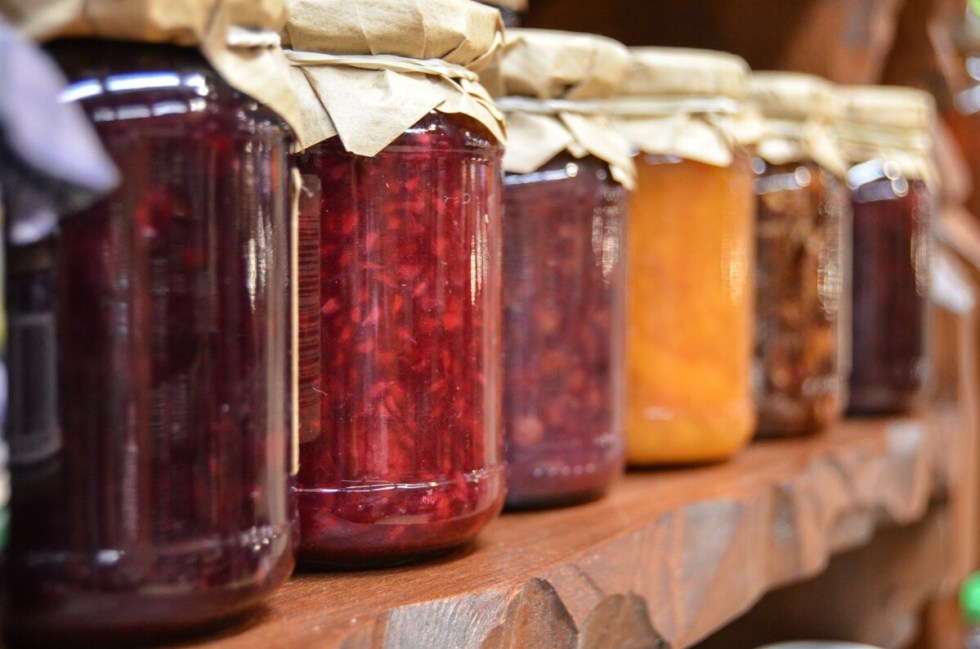
A Jumble of Jams, Jellies, Chutneys and Pickles
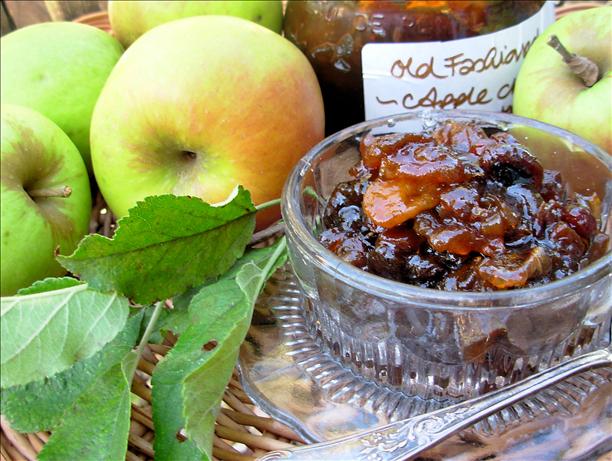
There are few things more satisfying then making your own preserves, whether they be from your own home-grown produce, or excess crops from family and friends – also known as desperate measures to offload 40 kilos of marrows, soft fruit, beans and onions etc in under a day. Alternatively, it may be that great bulk buy from the local Farmer’s Markets.
Making jams, jellies, pickles and chutneys is an ancient form of long term preserving – and who can fail to smile when opening a jar of ruby red strawberry jam in the midst of winter, the smell redolent of those heady summer days, even before spooning it on to your toast or scones and tasting it.
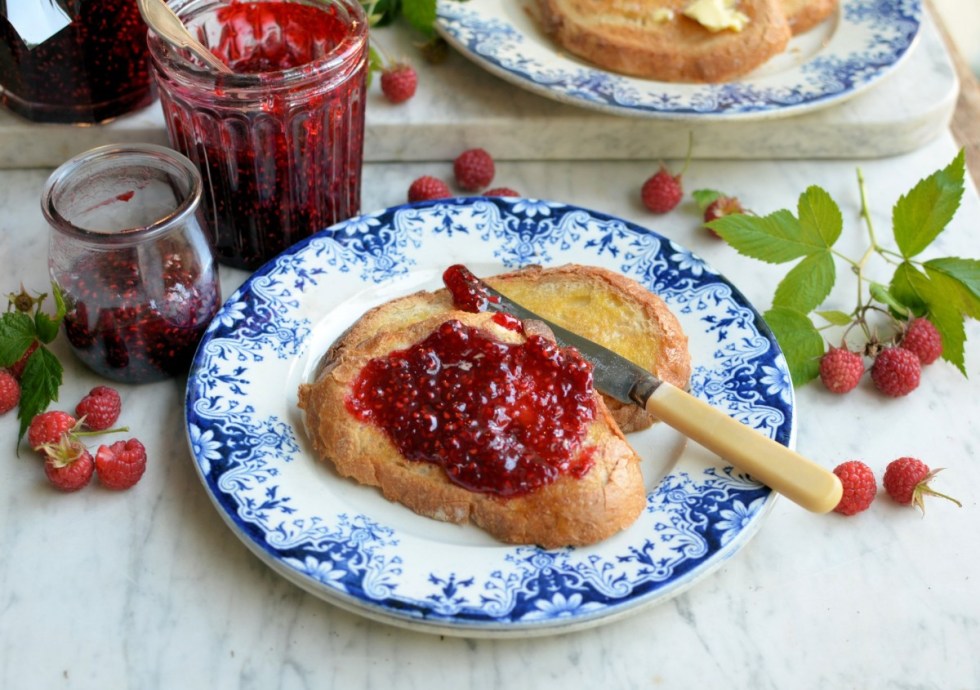
Preserving is really very easy – once the fruit or vegetables have been picked, washed and prepared, the only other criteria is to have some basic equipment and clean, sterile jars or containers. Oh yes, you will need some spare time too. However, I always make my “jamming” days fun.
I play my favourite music, make a big pot of coffee, have a few slices of cake handy and sometimes have friends around to join in the “jam session” – a real “Jam and Jerusalem” day.
Today, I am sharing a wonderful array of preserves for you to try and enjoy – from chutneys to jellies, with a few unusual pickles and curds along the way. A great autumn plan to have a Well Preserved Pantry, with a view to enjoying them all throughout the festive period, and the winter months.
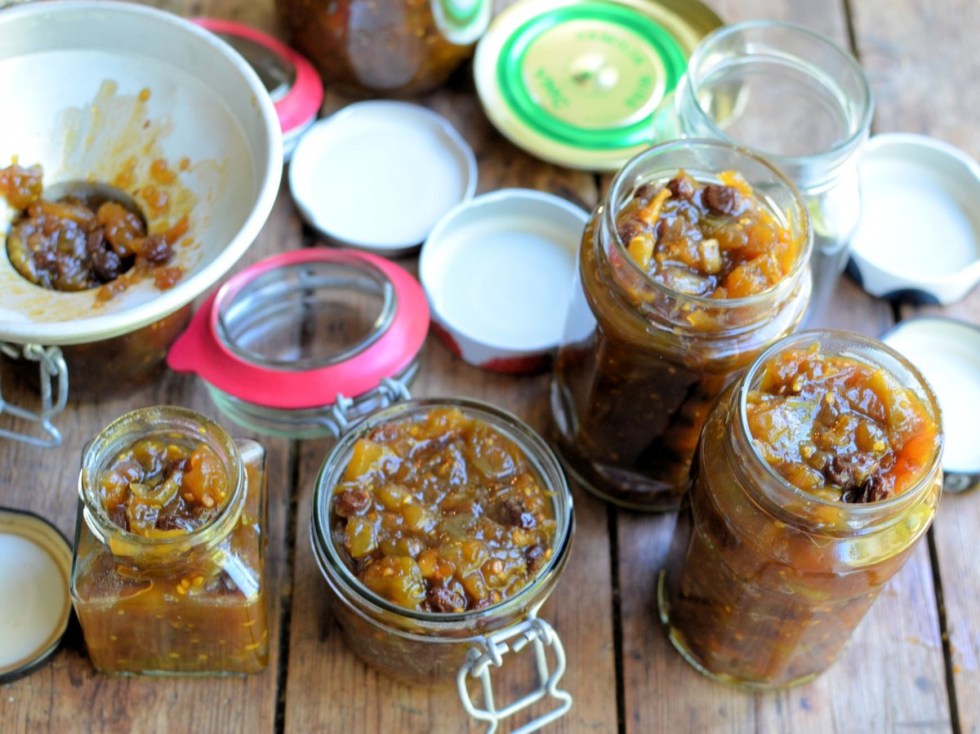
The basic equipment for preserving:
- A preserving pan – this can be a large saucepan if you are not making jams or chutneys in large quantities, but it MUST be large enough to allow rapid boiling without risk of the contents boiling over! Preserving pans are also wide in shape thus aiding evaporation and a rapid setting point. Although I am a big lover of copper pans, the most useful are aluminium or stainless steel, as you can make nearly all types of preserves and conserves in them. (Copper is great for jams and fruit preserves, but not vinegar based chutneys and pickles.)
- Spoons and Funnels – it is essential that you have a good selection of long handled wooden spoons for stirring. You will also find a slotted spoon helpful for skimming the scum that sometimes rises to the top of jams and a large metal spoon or ladle for spooning into the containers. I would be lost without my funnels – if you have to buy anything, do try to buy two good jam funnels in different sizes; they make it so easy (and safe) to fill the jars and containers.
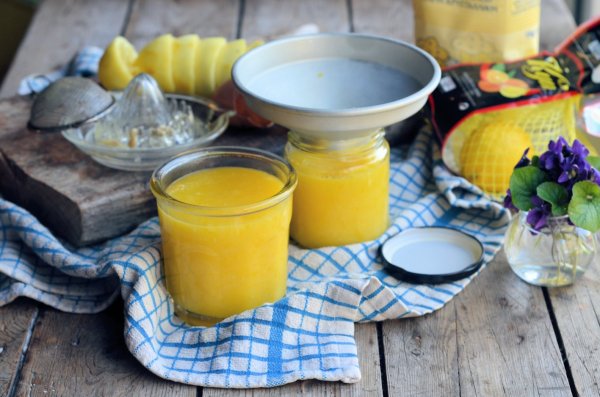
- Sugar thermometer – I don’t use one for everyday jams, but some people find them an easy and practical way to test the “set” on jams and preserves.
- Containers and Jam Jars – You can start off buying a few new jam jars and bottling jars, but after a while, you will find that you build up a good supply of jam jars and other suitable glass containers. I keep ALL of mine, only replacing the lids with transparent covers when needed. Ask friends and family to keep some jars to one side for you and you should never need to buy any in the future. I also find lots of my lovely old bottling jars and Kilner jars in Bric-a-Brac shops as well as car boot sales.
- Lids and Covers – If the lids on your reclaimed jars are not airtight or usable anymore, you can cover your jams, jellies and conserves with waxed discs and cellophane covers with elastic bands – you can buy these in packs, but be sure to check the sizes first. (This method if NOT suitable for pickles and chutneys, which need bottling jars with glass lids and rubber seals or new bottling jars with lids that are NON metallic – as the vinegar reacts with the metal.) If you are using bottling jars with glass lids, you can buy refills of the rubber seals – again, remember to check the sizes of your jars first.
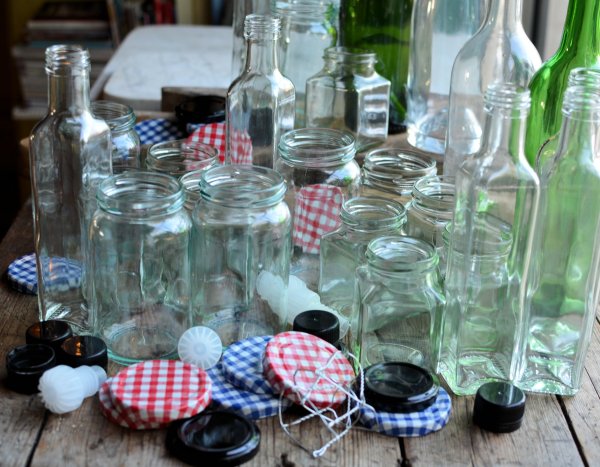
- Muslin and Jelly Bags – Muslin is needed if you are enclosing pips and spices to a preserve; jelly bags are needed if you are making jelly! These usually come with a frame, which fixes and suspends over a bowl, to extract the juice of the fruit.
- Labels – you can buy them, but I always make my own and hand write them – however, it can be fun to design and print your own.
In addition to the above, you will also need the usual chopping boards and knives for preparing the fruit and vegetables.
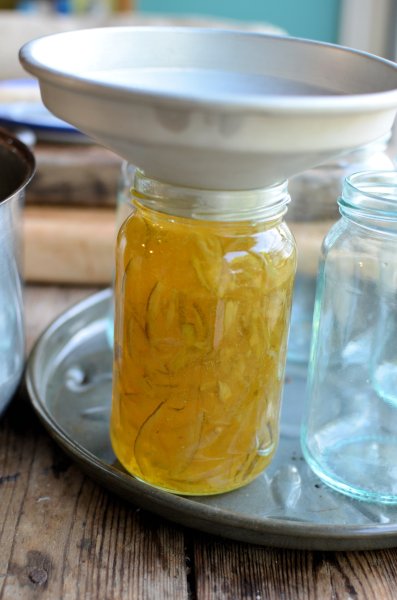
A note on sterilising jars:
Ensure jars are sterilised before you use them. This removes any bacteria present, which would cause your fruit to go off sooner than it would otherwise.
I pop mine into a hot wash in the dishwasher, but you can wash them in hot, soapy water, then rinse them and stand them upside down in the oven at 150 C for 30 minutes.
Your jars must be hot when you ladle in the mixture. It is essential to make sure that the lids are tight and create a vacuum and therefore an airtight seal.
You should hear the lids “pop” as they cool down and form a vacuum thus creating a good seal. Tip: Once the mixture is in, seal the jars immediately.
Store your preserves in a dark, dry, cool area. Moist, warm conditions can encourage mould growth and thus spoil preserves, and light will bleach their colour.
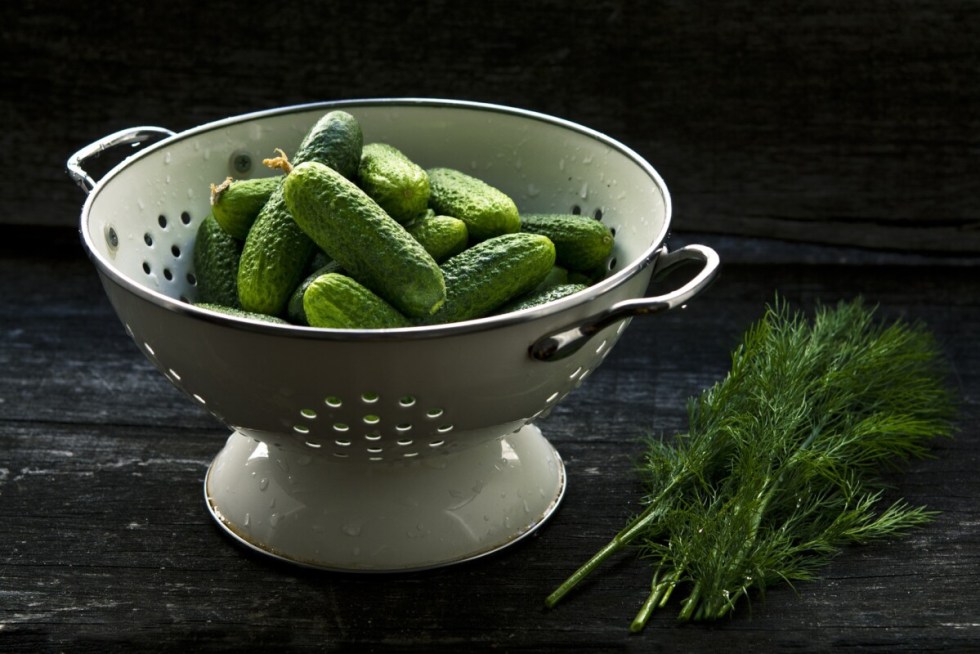
A Jumble of Preserves – The Different Types:
- Jam: Whole fruits that are slightly crushed and boiled with sugar. The most common of fruit preserves.
- Conserve: A preserve where the WHOLE fruits are suspended in a jam like sugar syrup. Alcohol is often added.
- Jelly: A clear jelly type preserve, where the fruit has been simmered until soft and the juice is extracted. The juice is then boiled with sugar to create a jelly. Herbs and flowers are often added.
- Marmalade: Usually made with oranges and other citrus fruit, a preserve where the peel is diced and boiled with sugar. The peel can be fine to chunky and sometimes jelly marmalades are made.
- Chutney and Relish: A sweet and savoury preserve made with sugar and vinegar. Can include fruit and vegetables, as well as numerous spices. The word is derived from the Hindu “chatni”, meaning strongly spiced. Relishes are lighter and not cooked as long as chutneys; they have a shorter shelf life but are brighter in colour.
- Pickles: One of the oldest forms of preserving, a way of keeping summer fruit and vegetables (and eggs) edible for winter. Usually only vinegar and spices are used, but sweet sugar pickles are also popular. National favourites include pickled onions, Branston pickle, piccalilli and Pan Yan.
- Butter, Cheese and Curd: A fruit butter is similar to jam but is stiffer and smoother in consistency. As its name suggest, a small amount of butter is used. A fruit cheese is similar to a fruit butter, but is much stiffer and can be cut into slices – often allowed to set in ornate moulds and served with game and cheese. Fruit curds are richer and softer than fruit cheese and butter; they are made with generous amounts of butter and eggs for a creamy taste.
(There are also numerous other preserves, such as: bottled fruits, ketchups, sauces, cordials, syrups, potted meats, potted cheese and pastes)
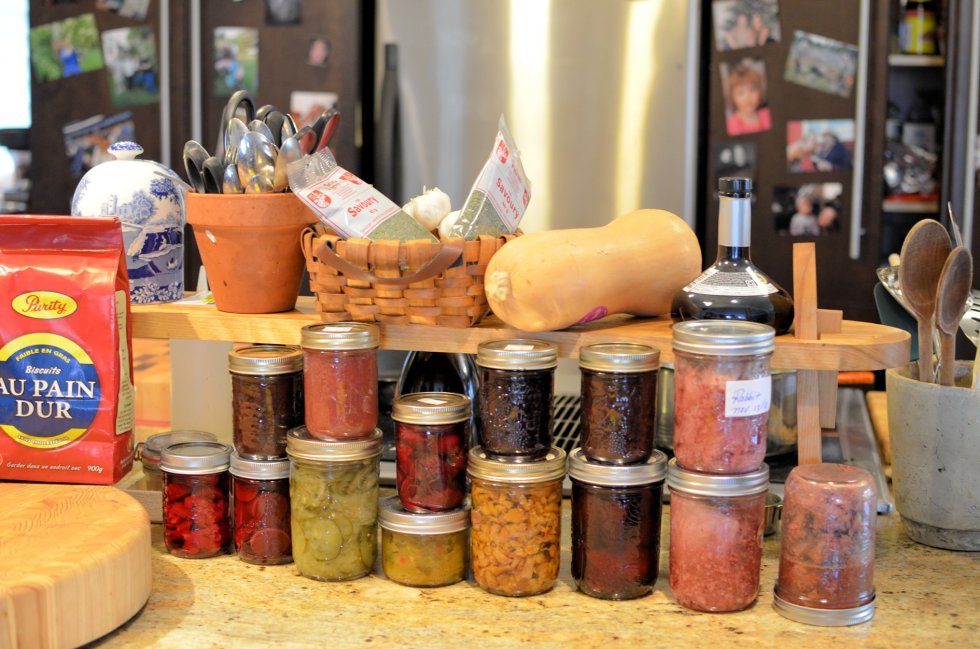
Notes on Set and Setting Points:
How to test the setting point with no thermometer:
Cold saucer test – Have one or two saucers in your freezer; as soon as the jam starts to feel “thicker” and is very syrupy, after about 10 to 15 minutes, take the jam off the heat and put one teaspoon of jam on to one of the very cold saucers.
Then push the jam with your finger, if it wrinkles and is firm and not runny, then the setting point has been reached. It is important to take the jam off the heat whilst you check.
If the setting point has not been reached – put the jam back onto the heat and continue to boil rapidly for another 2 minutes, continue with this method until the setting point has been reached.
Flake test – dip a large spoon into the pan of jam and scoop out a spoonful – hold the spoon horizontally over the pan of jam and allow the jam to drip……setting point has been reached when the jam forms a long drip, like webbed feet, and hangs without dropping from the spoon.
With a thermometer:
Temperature test – use a sugar thermometer and place the thermometer into a jug of boiling water just before testing for a set; lower the thermometer into the jam and setting point has been reached when the reading is 104.5C (220F)
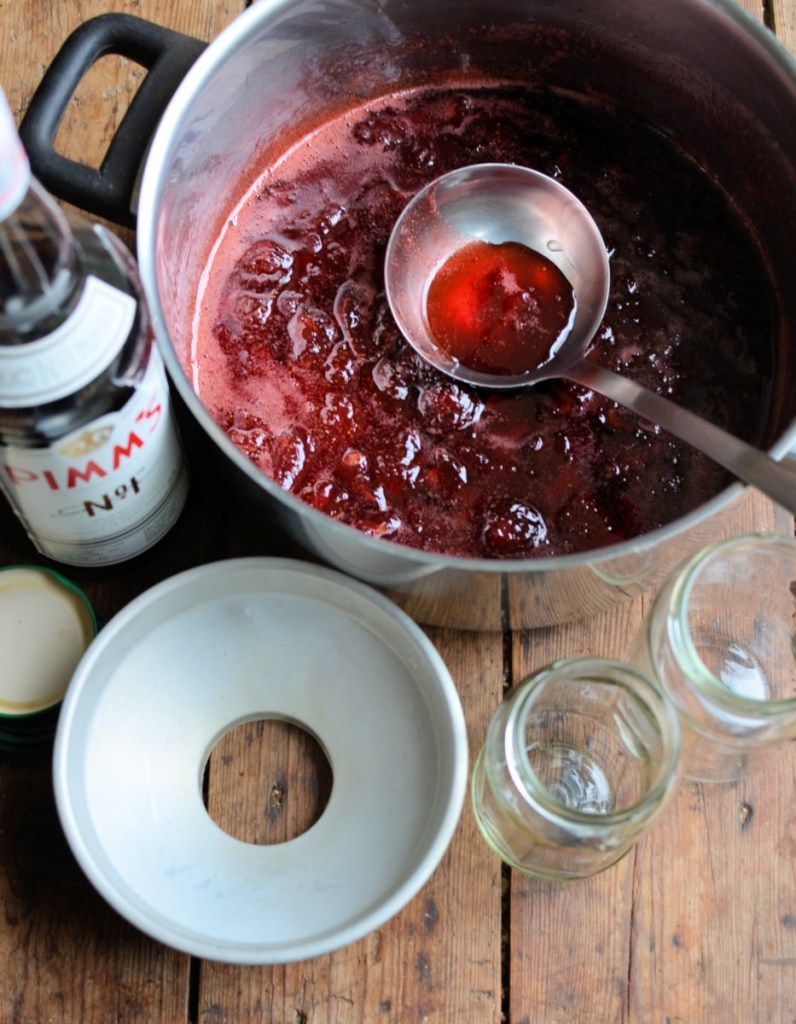
Recipes:
- Traditional Greengage Jam Recipe
- Apple and Mint Jelly
- Fresh Fig and Ginger Jam
- High Dumpsy Dearie, a Traditional English Autumn Fruit Jam
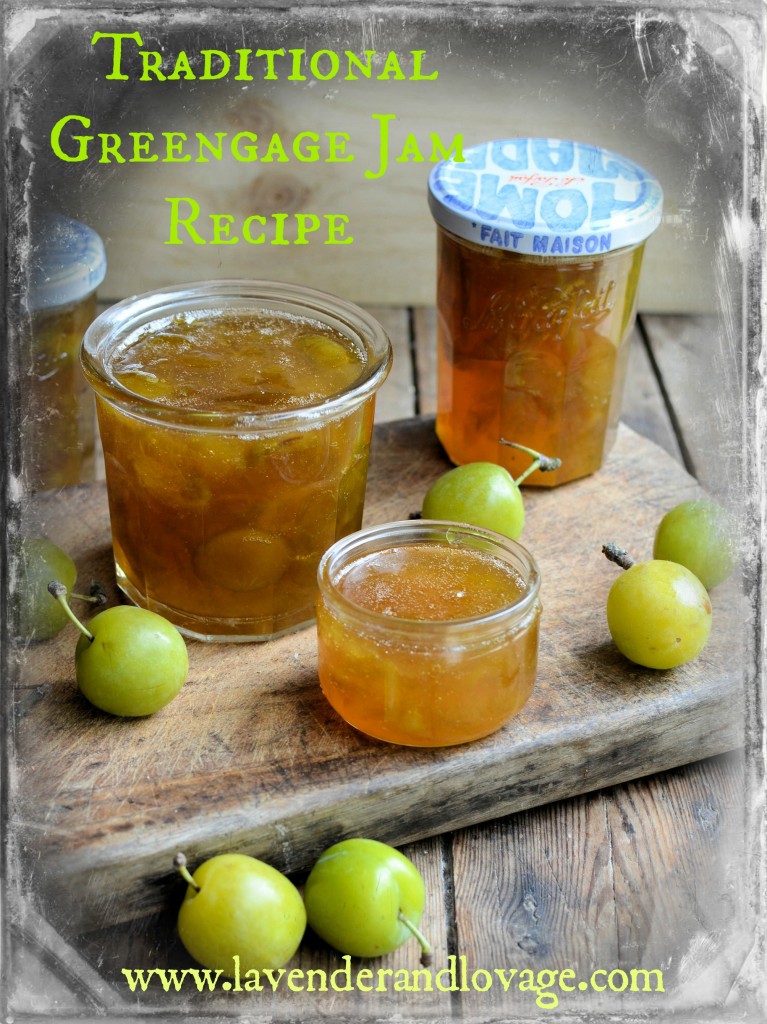
- Quince and Ginger Marmalade with Rosewater
- Quince Jelly
- Seedless Blackberry Jam
- Mixed Currant and Lavender Jelly

- Traditional Homemade Pickled Onions
- Rowan & Apple Jelly
- Quick Sweet Pickled Cucumbers
- Winter Salad (Pickle)
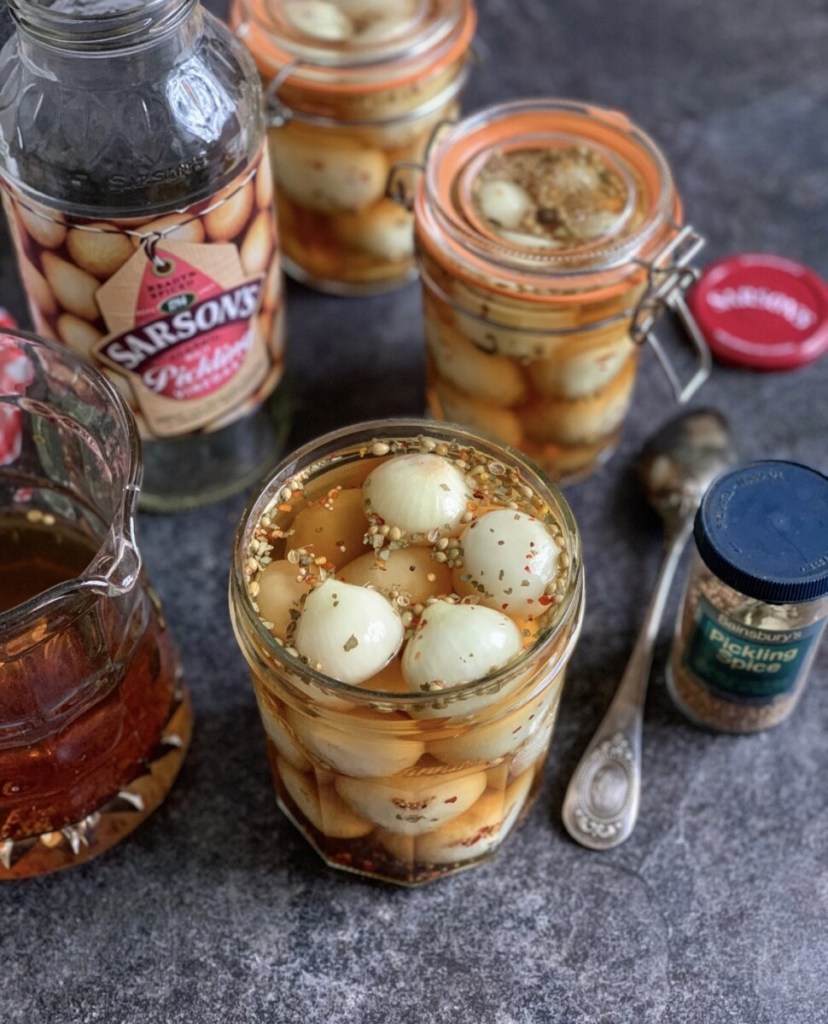
- Spiced Fig Jam
- Shooting Party Chutney (Green Tomato Chutney)
- Chocolate Orange Curd
- Apple, Fig and Pear Chutney with Cardamom
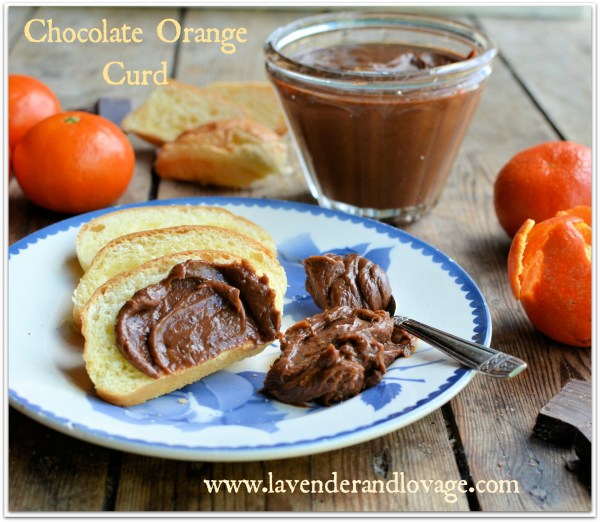
- Home-Made Lemon Curd
- Traditional Mincemeat for Christmas Mince Pies
- Boozy Mincemeat
- Christmas Spiced Mulled Pears in a Jar
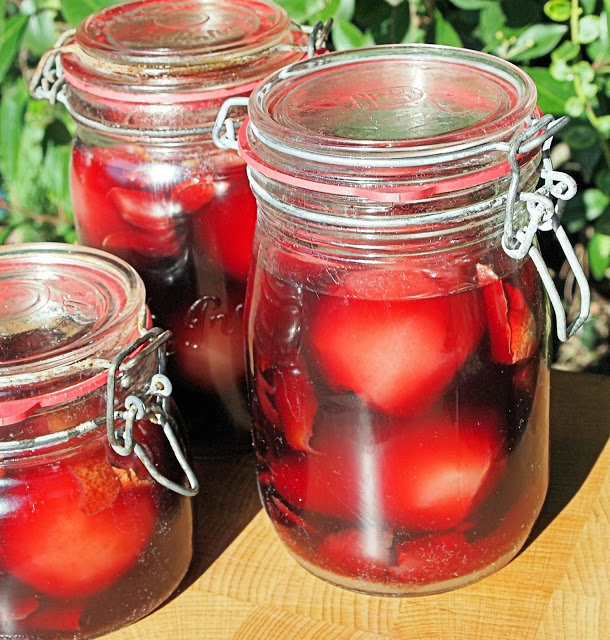
- Elizabethan Quince Cheese ~ Membrillo
- Christmas in a Jar – Pickled Shallots
- The Walnut Tree and Spiced Runner Bean Pickle
- Pickled Eggs
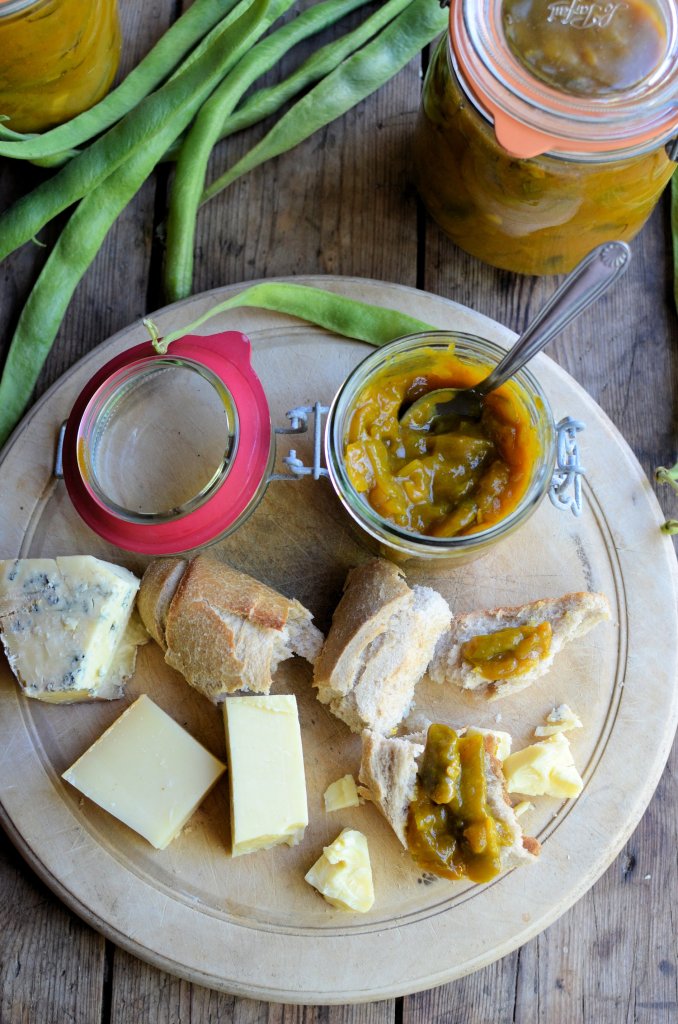
I hope today’s “virtual recipe book” of all preserves, will inspire you to make some of these recipes, for Christmas, the New Year and throughout the Winter season.
Happy Preserving, Karen
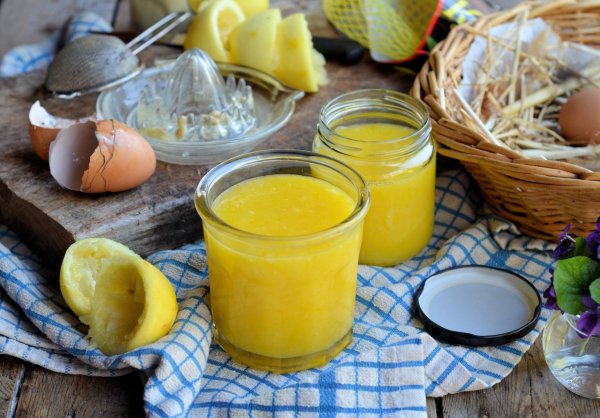

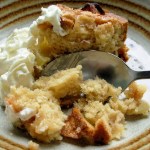
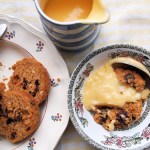


Carol Saunders says
Will be trying several of these jams.
Thank you for the recipes.
Karen Burns-Booth says
Thank you Carol, and it is my pleasure to share these recipes!
sherry says
yes i love preserving. i make mango chutney each christmas and occasionally jaboticaba jam when we have fruit on our tree. such fun! and so satisfying.
Karen Burns-Booth says
LOVE the sound of the Jaboticaba jam Sherry!
Mardie says
Hi there, just made my 2 nd batch of 3 Fruits marmalade, absolutely delious. Next on my list are Chutneys!
Karen Burns-Booth says
Thanks for letting me know Mardie! I am so pleased 🙂